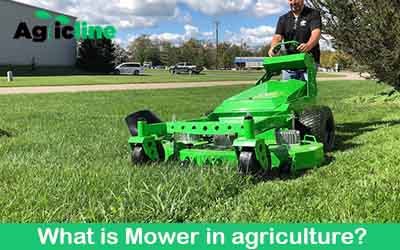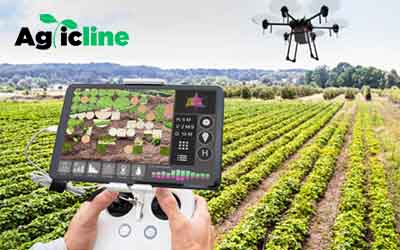A hay moisture tester, also known as a hay moisture meter or hay moisture analyzer, is a device used to measure the moisture content of hay or forage.
By using a hay moisture tester, farmers can accurately assess the moisture content of their hay, make informed decisions about baling and storage, and ensure the quality of their forage for feeding livestock.
It is an essential tool for farmers, hay producers, and livestock owners to ensure the quality and proper storage of hay.
Function of Hay Moisture Tester
The primary function of a hay moisture tester is to measure the moisture content of hay or forage. Here are the key functions of a hay moisture tester:
Moisture Measurement
The primary function of a hay moisture tester is to accurately measure the moisture content of hay.
Hay that is too wet or too dry can lead to quality issues, such as mold growth, nutrient loss, or combustion risks. By measuring the moisture content, farmers can determine if the hay is within the acceptable range for proper baling, storage, and feeding.
Quality Control
Hay moisture testers enable farmers to assess the quality of their hay. Moisture content is a crucial factor in determining the overall quality and nutritional value of hay.
By monitoring the moisture level, farmers can make informed decisions regarding harvesting, drying, and storage practices to maintain the desired quality standards. It will also interest you to learn the techniques for using hay moisture tester.
Harvest Timing
Hay moisture testers help farmers determine the optimal time to harvest their hay. Timing is crucial to ensure that the hay is at the ideal moisture level for baling.
Harvesting too early or too late can result in hay that is too wet or too dry, affecting its overall quality and nutritional value. By regularly measuring the moisture content, farmers can identify the best time to harvest for optimal forage quality.
Storage and Preservation
Proper moisture levels are essential for storing hay without spoilage or mold growth.
Excess moisture can lead to microbial activity, heating, and mold formation, resulting in decreased quality and potential health risks for livestock. With a hay moisture tester, farmers can assess the moisture content of hay before storing it, ensuring that it is within the appropriate range for safe storage and preservation.
Decision Making
The data provided by a hay moisture tester helps farmers make informed decisions related to hay management.
It allows them to adjust baling techniques, implement proper drying methods, and determine the suitability of hay for specific livestock feeding programs. By having accurate moisture measurements, farmers can make decisions that optimize the value, longevity, and usability of their hay.

Types of hay moisture tester
- Probe-Type Testers: These testers consist of a metal probe that is inserted into the bale or windrow of hay to measure the moisture content. The probe sends electrical signals through the hay, and the moisture content is calculated based on the electrical resistance or capacitance of the material.
- Handheld Electronic Testers: These testers are portable devices that utilize sensors to measure moisture levels. They typically have a digital display that provides instant readings. Some models may also offer additional features such as temperature compensation or built-in memory for storing measurements.
Direction of Usage
To use a hay moisture tester, follow these general steps:
- Calibrate the Tester: Calibrate the moisture tester according to the manufacturer’s instructions. Calibration ensures accurate readings by accounting for variations in temperature and humidity.
- Sample Collection: Take representative samples from different areas of the hay or windrow. Avoid areas that are wet or visibly damaged, as these can skew the moisture readings.
- Insert the Probe: If using a probe-type tester, insert the probe into the hay sample or bale. Ensure the probe is fully embedded in the material and in contact with as much hay as possible.
- Read the Moisture Level: The tester will display the moisture content either as a digital reading or on an analog scale. Take note of the moisture level and repeat the process with additional samples if needed.
- Interpret the Results: Compare the moisture readings to recommended moisture levels for the specific type of hay. This information can be obtained from agricultural resources, extension services, or guidelines provided by hay experts. Adjust baling, storage, or drying practices based on the moisture content to prevent spoilage or other issues.
Maintenance of Hay Moisture Tester
Proper maintenance of a hay moisture tester is essential to ensure accurate and reliable readings. Here are some maintenance tips:
- Regularly clean the probe or sensors with a soft cloth or brush to remove any debris or contaminants that could interfere with measurements.
- If the tester is battery-powered, monitor and replace the batteries as needed to ensure consistent performance.
- Store the hay moisture tester in a dry and protected place when not in use. Follow the manufacturer’s recommendations for storage conditions to maintain its accuracy and longevity.
- Regularly calibrate the tester according to the manufacturer’s instructions or recommended schedule. Calibration ensures accurate readings and should be performed at the beginning of each season or whenever necessary.
Parts of hay moisture tester
The specific design and features of hay moisture testers can vary among different models and manufacturers.
Some advanced models may include additional features such as temperature compensation, data logging, or connectivity options for transferring data to a computer or other devices.
Here are the key parts of a typical hay moisture tester
- Probe or Sensor: The probe or sensor is the part of the moisture tester that comes into contact with the hay sample. It is designed to measure the electrical conductivity, capacitance, or resistance of the hay, which is then used to calculate the moisture content.
- Display: The display is the interface of the moisture tester that shows the moisture readings. It can be a digital screen that displays the moisture content as a percentage or an analog scale with markings indicating the moisture level.
- Control Buttons: Moisture testers often have control buttons that allow the user to navigate through menus, select different modes, or perform calibration and adjustments. These buttons may include power on/off, mode selection, calibration, and data storage functions.
- Calibration Settings: Many moisture testers have calibration settings to ensure accurate moisture readings. Calibration may involve adjusting the tester to a known moisture standard or using specific calibration settings for different types of hay.
- Power Source: Hay moisture testers typically require a power source to operate. They may be battery-powered, using replaceable or rechargeable batteries, or they may have an AC adapter for electrical power.
- Sample Container (optional): Some moisture testers come with a sample container or tray that holds the hay sample during the measurement process. The container helps ensure consistent contact between the probe or sensor and the hay sample, improving the accuracy of the moisture readings.
- Memory or Data Storage (optional): Certain moisture testers have built-in memory or data storage capabilities. This feature allows users to store and retrieve moisture readings for multiple samples, enabling them to track moisture levels over time or compare measurements between different batches of hay.



